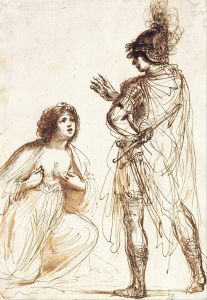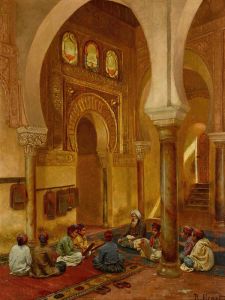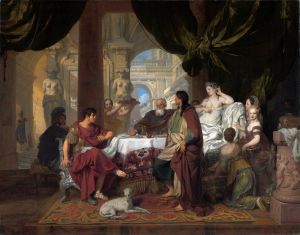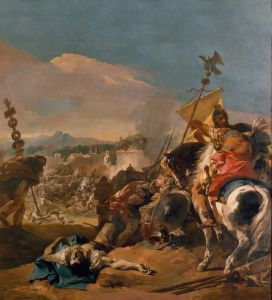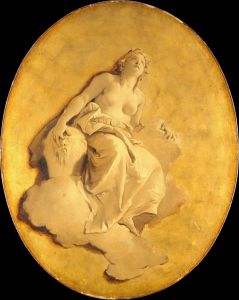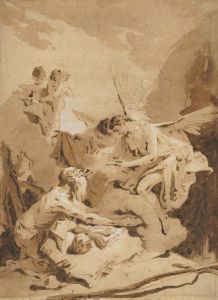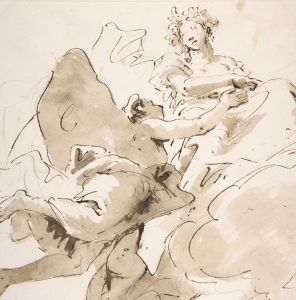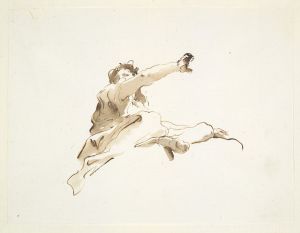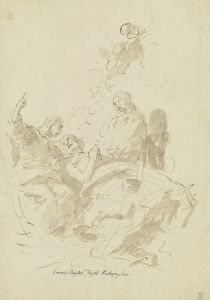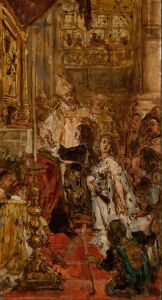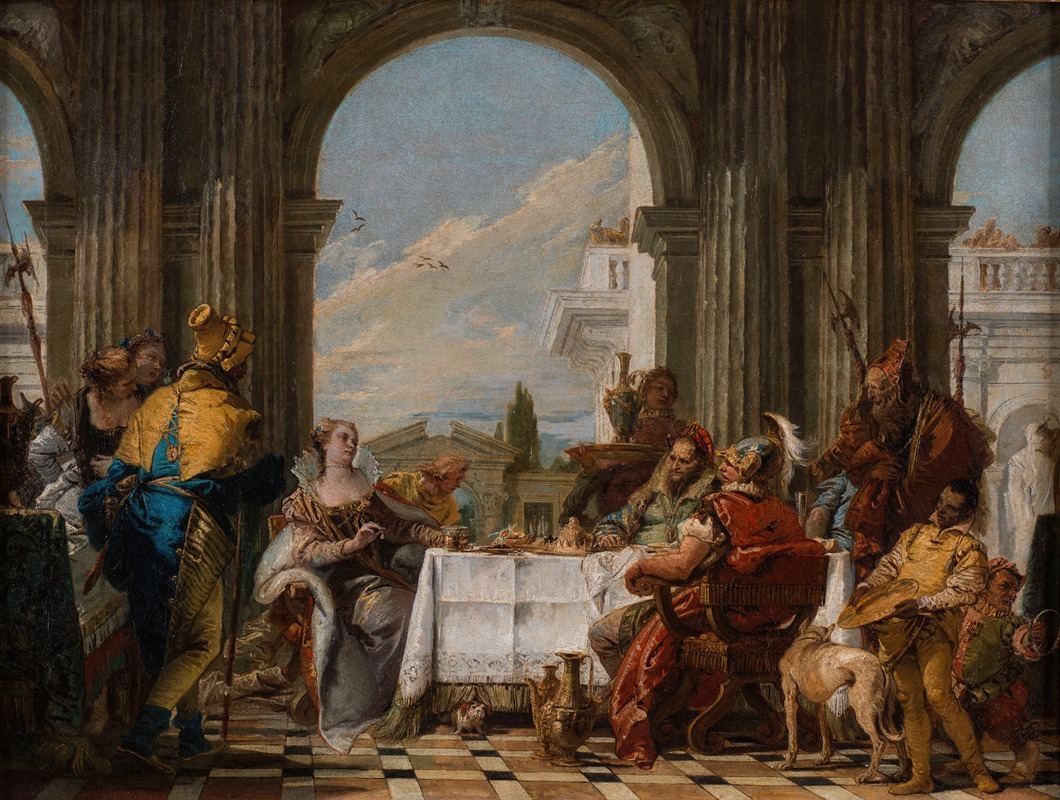
The Banquet of Cleopatra
A hand-painted replica of Giovanni Battista Tiepolo’s masterpiece The Banquet of Cleopatra, meticulously crafted by professional artists to capture the true essence of the original. Each piece is created with museum-quality canvas and rare mineral pigments, carefully painted by experienced artists with delicate brushstrokes and rich, layered colors to perfectly recreate the texture of the original artwork. Unlike machine-printed reproductions, this hand-painted version brings the painting to life, infused with the artist’s emotions and skill in every stroke. Whether for personal collection or home decoration, it instantly elevates the artistic atmosphere of any space.
Giovanni Battista Tiepolo's "The Banquet of Cleopatra" is a renowned oil painting that exemplifies the grandeur and theatricality of the Venetian Rococo style. Created in 1743-1744, the artwork is housed in the National Gallery of Victoria in Melbourne, Australia. Tiepolo, an Italian painter and printmaker, was celebrated for his vibrant use of color and dynamic compositions, and this painting is a testament to his mastery.
The painting depicts a legendary episode from the life of Cleopatra VII, the last active ruler of the Ptolemaic Kingdom of Egypt. The story, derived from Pliny the Elder's "Natural History," recounts a wager between Cleopatra and Mark Antony. Cleopatra bet that she could host the most expensive banquet in history. To win the bet, she dissolved one of her priceless pearls in a cup of vinegar and drank it, thus demonstrating her wealth and extravagance.
Tiepolo's composition captures the moment of high drama and opulence. Cleopatra is portrayed at the center of the scene, exuding regal poise and confidence. She is elegantly dressed, and her expression is one of calm assurance as she prepares to drop the pearl into the vinegar. Mark Antony, seated opposite her, watches with a mix of curiosity and disbelief. The surrounding figures, including attendants and courtiers, enhance the sense of spectacle and anticipation.
The painting is notable for its vivid color palette and the use of light, which highlights the luxurious fabrics and textures of the scene. Tiepolo's skillful application of chiaroscuro adds depth and dimension, drawing the viewer's eye to the central figures of Cleopatra and Antony. The architectural elements in the background, with their classical columns and arches, provide a sense of grandeur and timelessness, anchoring the historical narrative in a setting befitting its legendary status.
Tiepolo's work is characterized by its fluid brushwork and the ability to convey movement and emotion. In "The Banquet of Cleopatra," these qualities are evident in the animated gestures and expressions of the figures, as well as in the sumptuous drapery and intricate details of the setting. The painting reflects Tiepolo's fascination with the themes of power, luxury, and the exotic, which were popular among the patrons of the time.
"The Banquet of Cleopatra" is a significant example of Tiepolo's contribution to the art of the 18th century, showcasing his ability to blend historical narrative with artistic innovation. The painting not only illustrates a famous historical anecdote but also serves as a reflection of the cultural and artistic values of the Rococo period. Through his work, Tiepolo has left an enduring legacy, influencing generations of artists and captivating audiences with his imaginative interpretations of history and myth.
Today, "The Banquet of Cleopatra" remains a highlight of the National Gallery of Victoria's collection, admired for its technical brilliance and its ability to transport viewers to a world of opulence and intrigue. It stands as a testament to Tiepolo's genius and his enduring impact on the world of art.





